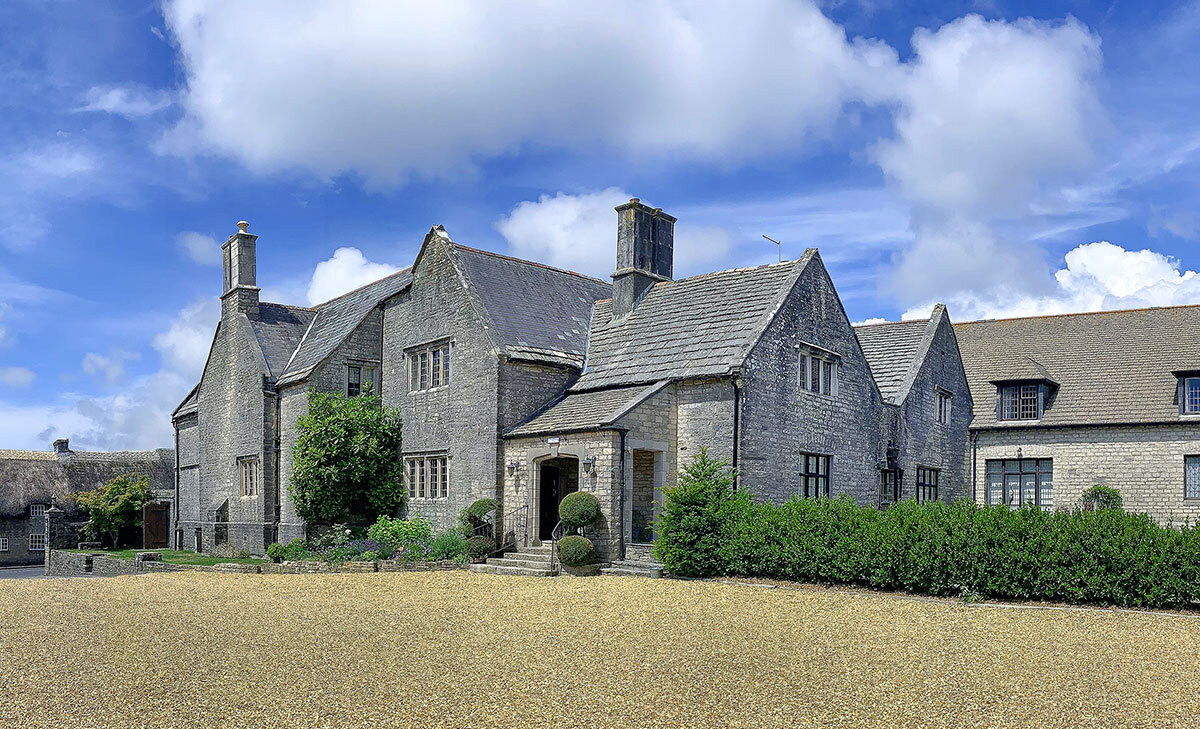Offering coastal and countryside getaways, this rural retreat is ideal for Dorset family…
Lulworth and Durdle Door

6.75 miles (10.9kms)
About the walk
Lulworth Cove is an almost circular bay in the rolling line of cliffs that form Dorset’s southern coast. The cliffs around the eastern side of the bay are crumbly and brightly coloured in places, while beyond the opposite arm, at Stair Hole, the rock is folded. The intriguing geology earned Lulworth Cove World Heritage status in 2002. The oldest layer, easily identified here, is the gleaming white Portland stone. This was much employed by Christopher Wren in his rebuilding of London. It is a fine-grained oolite, around 140 million years old. It holds tightly compressed, fossilised shells – the flat-coiled ones are ammonites, while the long curly ones are a gastropod (snail) known as the Portland Screw. Occasional giant ammonites, called titanites, are incorporated into house walls across Purbeck.
As seen at Bat’s Head, the rock may contain speckled bands of flinty chert. Above this is a layer of Purbeck marble, a limestone in which fossils are occasionally found. The soft layer above is the Wealden beds, a belt of colourful clays, silts and sands that are unstable and prone to landslips when exposed. Crumbly, white chalk overlays the Wealden beds. The chalk consists of the remains of microscopic sea creatures and shells deposited when sea covered much of Dorset, some 75 million years ago. This is the chalk that underlies Dorset’s famous downland and is seen in the exposed cliffs at White Nothe. Hard nodules and bands of flint appear in the chalk, and in its gravelbeach form the flint protects long stretches of this fragile coast. The laying down of chalk marks the end of the Cretaceous period. After this the blanket of chalk was uplifted, folded and subjected to erosion by the movement of tectonic plates. The Dorset coast was exposed to extreme pressure during the rising of the Alps (still going on). The resulting folding and overturning of strata can be seen at Durdle Door, and as the ‘Lulworth Crumple’ at Stair Hole.
Walk directions
From the gate at the top of the car park take the broad, paved footpath up shallow steps to the top of the first hill. Continue along the brow, and down the other side, to pass below a caravan park. At a gate, turn left to Durdle Door.
Reach a cove enclosed from the sea by a line of rocks. Turn left and follow the path and steps down to the beach if you wish, otherwise carry on ahead on the coast path, and the natural stone arch is revealed in Durdle Door Cove below you. The mass of Swyre Head looms close and, yes, that is the path you’re going to take, straight up the side. The coast path descends a little, then climbs up to Swyre Head. The path leads steeply down again on the other side, to a cove with a sea stack and a small arch (Bat’s Hole) on the right. Climb the next steep hill. Descend along the path just behind the cliffs, where the land tilts away from the sea.
The path climbs more gently up the next hill. After a navigation obelisk (the lower of two), the path curves gently to the left for 0.25 miles (400m) round the contour above West Bottom.
Turn right, through a metal kissing gate, on a side path with a marker stone for Daggers Gate. Head inland, with a fence on your left. The path curves round so you’re walking parallel with the coast on level grass-covered ground. Pass three standing stones, two of them with shell sculptures, with the upper obelisk over on your left. Keep straight ahead along the tops of the fields, until the path descends gently to a narrow gate, a wider one alongside, and a roundel bearing the words ‘Walk 6 – Permissive Path’.
Here bear half right, out into the field. After 150yds (140m) pass to the left of a tumulus. Ahead is a narrow gate at the bottom corner of a field, but only go through this to read the interpretation board just above. Otherwise stay below a belt of gorse bushes, to walk above the hollow called Scratchy Bottom. A gate leads into a green lane to Newlands Farm. Follow the driveway round to the right, and turn right into the caravan park. Go straight down the road through here. At the far side go through a gate on the left, signed to West Lulworth. Stay along the field-edge, down a little valley then bending right above a farm, and around the end of the hill. Keep straight on at the fingerpost and reach the gate above the car park.
Additional information
Stone path, grassy tracks, tarmac, muddy field path
Steeply rolling cliffs beside sea, green inland
Dogs on leads near cliff edge
OS Explorer OL15 Purbeck & South Dorset
Pay-and-display car park, signed at Lulworth Cove
By Visitor Centre and on lane to Lulworth Cove
The very steep descent of Bindon Hill extension is not for vertigo sufferers.
WALKING IN SAFETY
Read our tips to look after yourself and the environment when following this walk.
Find out more
Also in the area
About the area
Discover Dorset
Dorset means rugged varied coastlines and high chalk downlands. Squeezed in among the cliffs and set amid some of Britain’s most beautiful scenery is a chain of picturesque villages and seaside towns. Along the coast you’ll find the Lulworth Ranges, which run from Kimmeridge Bay in the east to Lulworth Cove in the west. Together with a stretch of East Devon, this is Britain’s Jurassic Coast, a UNESCO World Heritage Site and Area of Outstanding Natural Beauty, noted for its layers of shale and numerous fossils embedded in the rock. Among the best-known natural landmarks on this stretch of the Dorset coast is Durdle Door, a rocky arch that has been shaped and sculpted to perfection by the elements. The whole area has the unmistakable stamp of prehistory.
Away from Dorset’s magical coastline lies a landscape with a very different character and atmosphere, but one that is no less appealing. Here, winding, hedge-lined country lanes lead beneath lush, green hilltops to snug, sleepy villages hidden from view and the wider world. The people of Dorset are justifiably proud of the achievements of Thomas Hardy, its most famous son, and much of the county is immortalised in his writing.
Nearby stays
Restaurants and Pubs
Nearby experiences
Recommended things to do
Why choose Rated Trips?
Your trusted guide to rated places across the UK
The best coverage
Discover more than 15,000 professionally rated places to stay, eat and visit from across the UK and Ireland.
Quality assured
Choose a place to stay safe in the knowledge that it has been expertly assessed by trained assessors.
Plan your next trip
Search by location or the type of place you're visiting to find your next ideal holiday experience.
Travel inspiration
Read our articles, city guides and recommended things to do for inspiration. We're here to help you explore the UK.
















